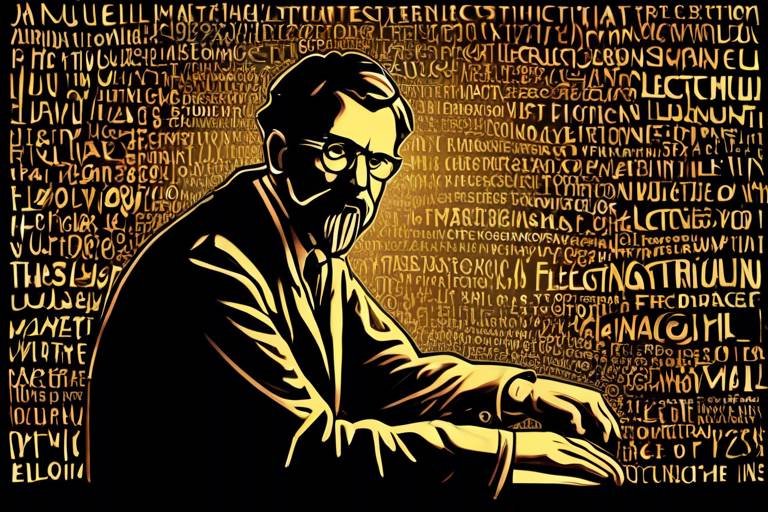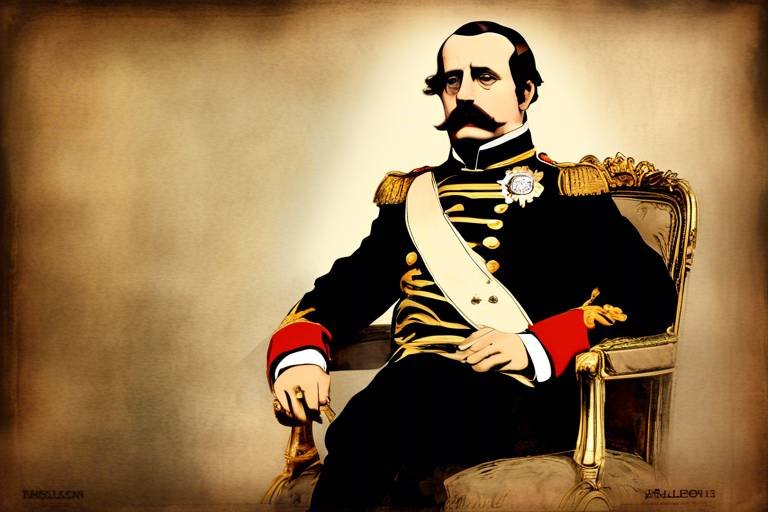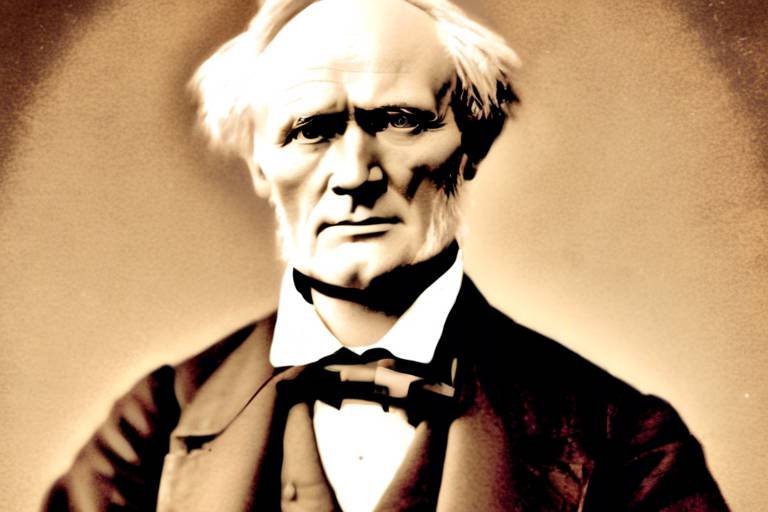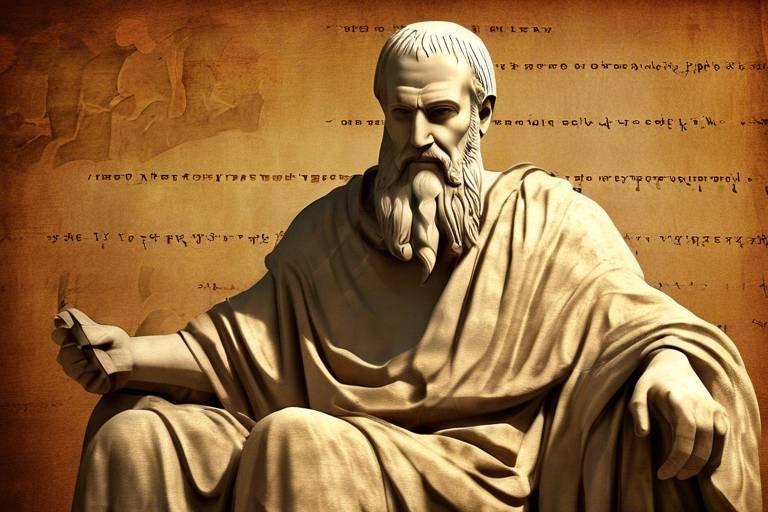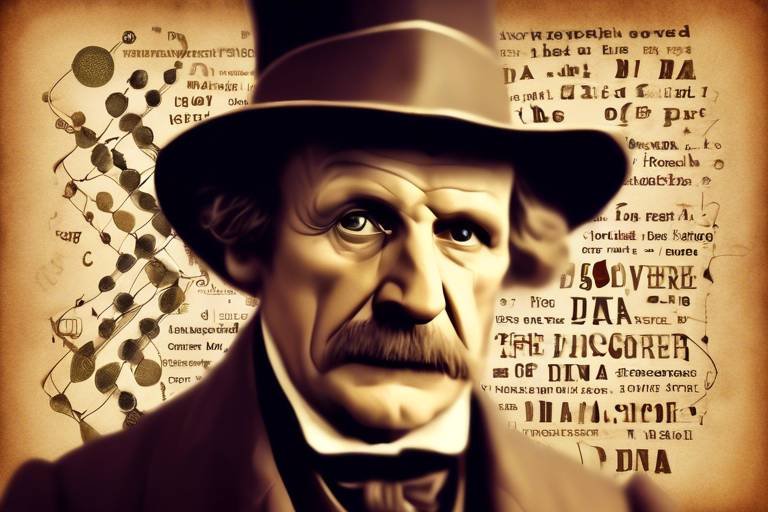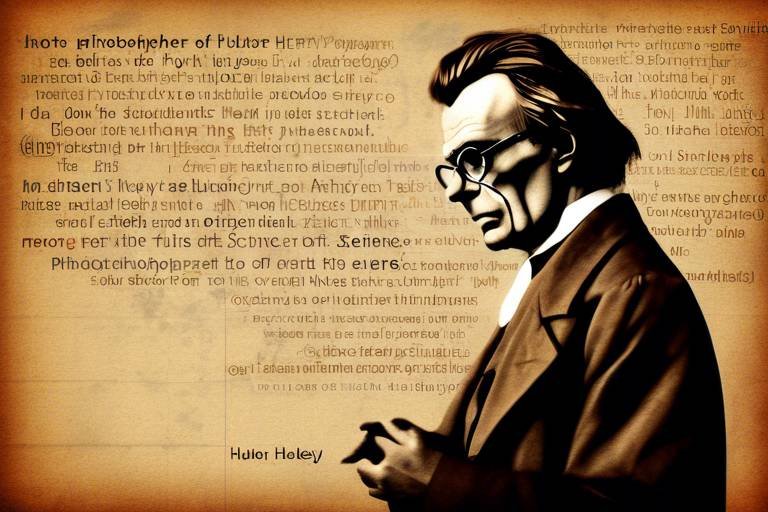Maxwell: The Theorist of Electromagnetism
James Clerk Maxwell, a name synonymous with brilliance and innovation in the realm of physics, stands as a towering figure in the history of science. Born in Scotland in 1831, Maxwell's insatiable curiosity and sharp intellect propelled him on a remarkable journey that would forever change our understanding of electromagnetism.
From his early days in Edinburgh, where he displayed a remarkable aptitude for mathematics, to his later studies at Cambridge University, Maxwell's academic prowess was evident from a young age. Surrounded by the intellectual ferment of the 19th century, he delved into the intricacies of physics and mathematics, laying the groundwork for his groundbreaking contributions to science.
Maxwell's crowning achievement came in the form of his eponymous equations, a set of four mathematical expressions that unified the theories of electricity and magnetism. With these equations, Maxwell not only provided a comprehensive framework for understanding electromagnetic phenomena but also predicted the existence of electromagnetic waves, a discovery that would later pave the way for technologies such as radio and radar.
The elegance and significance of Maxwell's equations cannot be overstated. In one fell swoop, he revolutionized our understanding of light, electricity, and magnetism, demonstrating the interconnectedness of these fundamental forces in the universe. Through his work, Maxwell revealed the underlying harmony and symmetry that govern the behavior of electromagnetic fields.
Central to Maxwell's theory is the concept of the electromagnetic spectrum, a vast continuum of electromagnetic radiation that spans from radio waves to gamma rays. This spectrum, elucidated by Maxwell's equations, encompasses the diverse forms of energy that permeate the universe, serving as the foundation for modern telecommunications and countless other technologies.
The legacy of James Clerk Maxwell endures as a testament to the power of human intellect and imagination. His work continues to inspire generations of scientists and engineers, driving innovation and discovery in fields ranging from quantum mechanics to information technology. Maxwell's insights into electromagnetism have left an indelible mark on the fabric of modern science, shaping our understanding of the natural world in profound ways.
As we look to the future, Maxwell's contributions remain as relevant as ever, guiding us in our exploration of new frontiers in physics and technology. His enduring influence serves as a beacon of inspiration for those who seek to unravel the mysteries of the universe and harness the forces that govern our world.
Through the lens of Maxwell's visionary genius, we gain a deeper appreciation for the interconnectedness of the physical world and the boundless potential of human ingenuity. In a universe governed by the elegant laws of electromagnetism, Maxwell stands as a beacon of knowledge and discovery, illuminating the path forward for generations to come.

Early Life and Education
James Clerk Maxwell, a pioneering physicist, is renowned for formulating the classical theory of electromagnetic radiation, which laid the foundation for modern physics and technology.
Maxwell's journey began in Scotland, where he was raised in a scholarly environment that nurtured his curiosity in physics and mathematics. His academic pursuits led him to prestigious institutions like Cambridge, where he honed his skills and deepened his understanding of the natural world.
During his formative years, Maxwell was influenced by prominent scientists of the time, such as Michael Faraday, whose work in electromagnetism sparked Maxwell's interest in the field. These early experiences shaped Maxwell's intellectual development and set the stage for his groundbreaking contributions to physics.
Maxwell's educational background equipped him with the tools necessary to tackle complex scientific problems, and his passion for unraveling the mysteries of the universe drove him to push the boundaries of knowledge in the realm of electromagnetism.
Maxwell's most significant achievement was the development of a set of equations that unified the theories of electricity and magnetism. These equations, known as Maxwell's equations, not only provided a comprehensive framework for understanding electromagnetic phenomena but also predicted the existence of electromagnetic waves.
The elegance of Maxwell's equations lies in their mathematical beauty and their profound physical implications. By unifying previously disparate theories, Maxwell revolutionized the understanding of light, electricity, and magnetism, paving the way for a new era in physics.
Maxwell's work laid the groundwork for the concept of the electromagnetic spectrum, which encompasses a wide range of electromagnetic radiation, from radio waves to gamma rays. This comprehensive framework provided a unified understanding of the diverse forms of electromagnetic waves.
The practical applications of Maxwell's theories are evident in modern technology, where innovations in telecommunications, electronics, and other fields rely heavily on the manipulation of electromagnetic waves. Maxwell's insights continue to drive advancements in various industries, shaping the way we communicate and interact with the world around us.
Maxwell's legacy extends beyond his groundbreaking discoveries, inspiring generations of scientists and engineers to explore the frontiers of electromagnetism. His contributions have had a lasting impact on the fields of physics and engineering, shaping the course of scientific progress for years to come.
Even in the modern era, Maxwell's work remains relevant and influential in diverse areas of research and technology. From quantum mechanics to relativity and information technology, Maxwell's contributions continue to shape our understanding of the physical world and drive innovation in the digital age.

Maxwell's Equations
James Clerk Maxwell's equations are the cornerstone of classical electromagnetism, revolutionizing our understanding of the relationship between electricity and magnetism. These four equations, known collectively as Maxwell's equations, elegantly describe how electric and magnetic fields interact and propagate through space. They not only unified the previously separate theories of electricity and magnetism but also predicted the existence of electromagnetic waves, a groundbreaking revelation at the time.
Maxwell's equations consist of Gauss's law for electricity, Gauss's law for magnetism, Faraday's law of electromagnetic induction, and Ampère's law with Maxwell's addition. Together, these equations form a comprehensive framework for understanding the behavior of electromagnetic fields and their interactions with charged particles and currents. The mathematical beauty of Maxwell's equations lies in their ability to succinctly capture complex physical phenomena and predict the behavior of electromagnetic waves.
One of the key implications of Maxwell's equations is the unification of electricity, magnetism, and light as different manifestations of the same underlying electromagnetic phenomenon. By demonstrating the intimate connection between these seemingly disparate forces, Maxwell laid the foundation for modern physics and technology. The predictive power of his equations not only confirmed the existence of electromagnetic waves, such as light, but also opened up new avenues for research and technological development.
Maxwell's equations have had a profound impact on various fields beyond classical electromagnetism. Their influence extends to areas such as optics, quantum mechanics, and even general relativity. By providing a unified framework for understanding the fundamental forces of nature, Maxwell's equations have inspired generations of scientists and engineers to explore the frontiers of physics and push the boundaries of human knowledge.

Formulation and Significance
Explore the life and contributions of James Clerk Maxwell, the pioneering physicist who formulated the classical theory of electromagnetic radiation, laying the foundation for modern physics and technology.
Discover Maxwell's upbringing in Scotland, his academic journey at renowned institutions like Cambridge, and the influences that shaped his interest in physics and mathematics.
Learn about the famous set of equations that Maxwell developed, unifying the theories of electricity and magnetism and predicting the existence of electromagnetic waves.
James Clerk Maxwell's formulation of the set of equations that bear his name was a groundbreaking achievement in the realm of physics. These equations elegantly unified the previously separate theories of electricity and magnetism, providing a comprehensive framework for understanding the fundamental forces of nature. The significance of Maxwell's equations cannot be overstated, as they not only revolutionized the field of electromagnetism but also paved the way for the development of modern technology.
Delve into the concept of the electromagnetic spectrum, encompassing all forms of electromagnetic radiation, from radio waves to gamma rays, as predicted by Maxwell's work.
Explore how Maxwell's theories paved the way for innovations in telecommunications, electronics, and other technologies that rely on the manipulation of electromagnetic waves.
Examine Maxwell's lasting impact on physics and engineering, inspiring subsequent generations of scientists and engineers to further explore the mysteries of electromagnetism.
Reflect on the enduring relevance of Maxwell's contributions in contemporary research and technology, shaping fields such as quantum mechanics, relativity, and information technology.
Stay tuned for some common questions and answers about James Clerk Maxwell and his contributions to the field of electromagnetism.

Electromagnetic Spectrum
The is a fundamental concept in physics that encompasses the entire range of electromagnetic radiation, from the longest radio waves to the shortest gamma rays. This spectrum is a direct result of James Clerk Maxwell's groundbreaking work in formulating the theory of electromagnetism. By unifying the theories of electricity and magnetism into a cohesive framework, Maxwell's equations predicted the existence of electromagnetic waves, which propagate through space at the speed of light.
Maxwell's equations provided the theoretical foundation for understanding how electromagnetic waves of varying frequencies and wavelengths interact with matter. This interaction gives rise to the diverse forms of electromagnetic radiation that constitute the spectrum. Each type of radiation, whether it be radio waves, microwaves, infrared, visible light, ultraviolet, X-rays, or gamma rays, has unique properties and applications based on its frequency and energy.
One of the remarkable aspects of the electromagnetic spectrum is its versatility in applications across different fields. For example, radio waves are utilized in telecommunications for broadcasting and wireless communication, while microwaves are essential for technologies like radar and microwave ovens. Infrared radiation finds use in thermal imaging and remote sensing, while visible light enables human vision and optical communications.
Moreover, the higher-energy regions of the spectrum, such as ultraviolet, X-rays, and gamma rays, have significant applications in medicine, industry, and scientific research. X-rays are commonly used in medical imaging to visualize internal structures, while gamma rays play a crucial role in nuclear medicine and radiation therapy. Understanding the properties and behaviors of these high-energy radiations is essential for ensuring their safe and effective use in various applications.
Furthermore, the electromagnetic spectrum serves as a valuable tool for astronomers and astrophysicists in studying celestial objects and phenomena. By analyzing the electromagnetic radiation emitted or absorbed by stars, galaxies, and other cosmic bodies, scientists can gain insights into their composition, temperature, and evolutionary processes. Different regions of the spectrum provide unique information about the universe, allowing researchers to piece together a comprehensive picture of the cosmos.

Applications in Modern Technology
Maxwell's groundbreaking theories on electromagnetism have had a profound impact on modern technology, shaping the way we communicate, harness energy, and innovate in various fields. One of the key applications of Maxwell's work lies in the realm of telecommunications, where his equations laid the foundation for the development of wireless communication systems. From radio waves to microwaves, the principles elucidated by Maxwell continue to drive advancements in wireless technology, enabling global connectivity and information exchange.
Moreover, Maxwell's insights into electromagnetic waves have been instrumental in the evolution of electronics, from the design of circuitry to the development of devices such as antennas and transmitters. By understanding the behavior of electromagnetic fields, engineers and scientists have been able to create intricate systems that power everything from smartphones to satellites, revolutionizing how we interact with technology on a daily basis.
Furthermore, Maxwell's equations have found applications in the field of medical technology, particularly in diagnostic imaging techniques like MRI (Magnetic Resonance Imaging). The manipulation of electromagnetic fields based on Maxwell's principles allows for non-invasive imaging of internal structures within the human body, aiding in the diagnosis and treatment of various medical conditions.
Additionally, Maxwell's contributions have paved the way for advancements in radar technology, enabling precise detection and tracking of objects in various environments. The principles of electromagnetism elucidated by Maxwell play a crucial role in radar systems used for navigation, weather forecasting, defense, and aviation, enhancing safety and efficiency in diverse sectors.
Overall, the applications of Maxwell's theories in modern technology are vast and varied, underscoring the enduring relevance of his work in shaping the technological landscape of the 21st century and beyond.

Legacy and Influence
James Clerk Maxwell's legacy in the realm of physics and engineering is nothing short of monumental. His groundbreaking work in formulating the classical theory of electromagnetic radiation has left an indelible mark on the scientific community, shaping the course of modern physics and technology.
Maxwell's profound insights into the nature of electricity and magnetism culminated in the development of his eponymous equations, a set of fundamental principles that unified these two phenomena. These equations not only provided a comprehensive framework for understanding electromagnetic interactions but also predicted the existence of electromagnetic waves, a concept that would later underpin the entire field of wireless communication.
The impact of Maxwell's equations reverberates far beyond the confines of theoretical physics. They have been instrumental in driving innovations in various technological domains, from the design of antennas and circuitry in telecommunications to the development of sophisticated imaging techniques in medical diagnostics.
Moreover, Maxwell's theoretical framework laid the groundwork for the concept of the electromagnetic spectrum, a continuum of electromagnetic waves spanning from low-frequency radio waves to high-energy gamma rays. This conceptualization not only expanded our understanding of light and radiation but also provided a framework for categorizing and harnessing the diverse forms of electromagnetic energy present in the universe.
Maxwell's intellectual legacy extends beyond his scientific contributions, permeating the very fabric of modern society. His work has inspired generations of physicists, engineers, and inventors to push the boundaries of knowledge and innovation, driving progress in fields as diverse as quantum mechanics, relativity, and information technology.
As we navigate the complexities of the digital age, Maxwell's legacy serves as a guiding light, reminding us of the transformative power of human intellect and curiosity. His enduring influence continues to shape our understanding of the natural world and propel us towards new frontiers of scientific discovery and technological advancement.

Continued Relevance
James Clerk Maxwell's contributions to the field of electromagnetism continue to reverberate through modern science and technology, showcasing the timeless relevance of his groundbreaking work. His pioneering equations not only revolutionized our understanding of light, electricity, and magnetism but also laid the foundation for crucial advancements in various technological domains.
Maxwell's profound insights into the nature of electromagnetic waves have transcended time, influencing fields far beyond his era. Today, his equations serve as a cornerstone for diverse disciplines, from quantum mechanics to information technology, highlighting the enduring impact of his theoretical framework.
By elucidating the intricate interplay between electric and magnetic fields, Maxwell's equations have become indispensable tools for researchers and engineers, guiding the development of cutting-edge technologies that shape our modern world. The principles he formulated continue to drive innovation and discovery, fueling progress in areas such as telecommunications, electronics, and beyond.
Moreover, Maxwell's theoretical framework has not only stood the test of time but has also evolved to underpin new frontiers of scientific inquiry. His concepts resonate in contemporary research endeavors, offering profound insights into the fundamental nature of the universe and providing a springboard for further exploration and experimentation.
Frequently Asked Questions
- What are Maxwell's equations?
Maxwell's equations are a set of four fundamental equations in classical electromagnetism that describe how electric and magnetic fields interact. They form the foundation of the theory of electromagnetism and predict the behavior of electromagnetic waves.
- How did Maxwell's work impact modern technology?
Maxwell's theories had a profound impact on modern technology by laying the groundwork for innovations in telecommunications, electronics, and various other fields that rely on the manipulation of electromagnetic waves. These advancements have revolutionized the way we communicate and interact with technology today.
- What is the electromagnetic spectrum?
The electromagnetic spectrum refers to the range of all possible frequencies of electromagnetic radiation, including radio waves, microwaves, infrared, visible light, ultraviolet, X-rays, and gamma rays. Maxwell's work predicted the existence of this spectrum, demonstrating the interconnected nature of electromagnetic waves.
- Why is Maxwell's legacy significant in the field of physics?
Maxwell's legacy is significant in the field of physics because his contributions revolutionized our understanding of light, electricity, and magnetism. His equations paved the way for further advancements in modern physics, such as quantum mechanics and relativity, and continue to shape technological innovations today.

